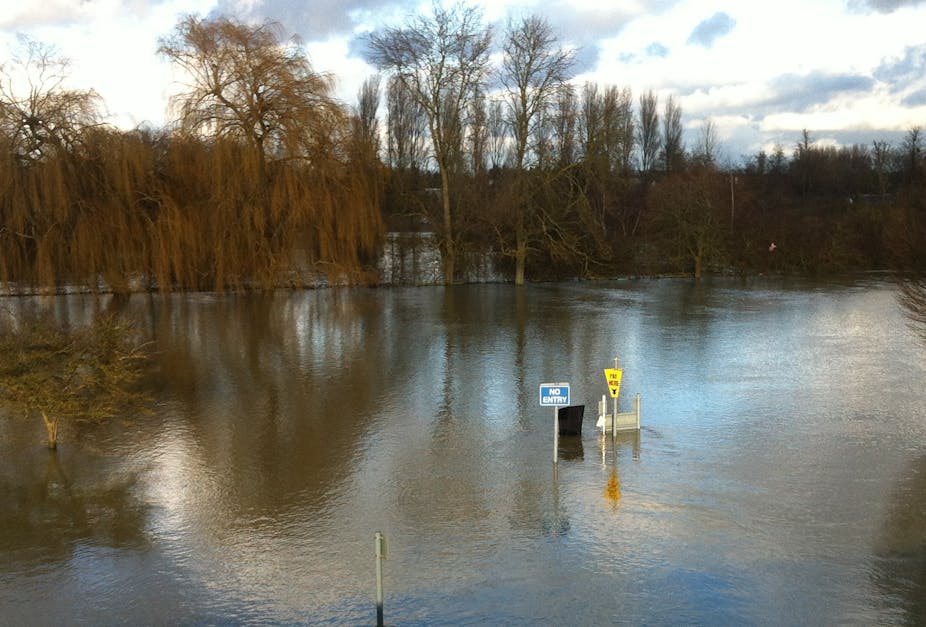The flooding of the Thames and Severn rivers over the past week has brought the misery of being flooded to many more people beyond the sodden Somerset Levels.
Such a prolonged period of rainfall – the wettest winter since records began – has overwhelmed the soil and groundwater’s natural capacity to draw water away. While the flooding has caused widespread disruption and inconvenience, that’s not to say they’re the worst “in living memory”.
There are records kept for most rivers in the UK that record river flow going back around 40 years, with records at a handful of sites such as York, Nottingham and Teddington on the Thames in west London going back for more than a century. These records are invaluable in helping us map and understand flood risk. Where few instrumental records exist we can use other forms of evidence such as flood marks and documentary accounts such as those found in diaries or newspaper reports.
Flood marks such as these provide insight to the level of floodwaters in the past. When these pictures were taken earlier this week at Wallingford, the flood was comparable to the level reached in 2003 and 2007 – both “in living memory” – but was far below the high-water mark of the largest flood recorded on the Thames in the last couple of hundred years, here in 1894.

Flood levels may vary throughout a catchment area, so a flood level may be higher or lower upstream or downstream of a site as a result of local factors such as drainage, run-off, vegetation and additional water from tributaries or upwelling groundwater.
While some care is needed in interpretation of the records, what this shows is that the current flooding is not quite as rare as some have claimed. Over the past few hundred years large floods occurred on the Thames in 1774, 1852, 1894 and 1947. The British Evening Post of London recorded on March 15 1774:
At Kingston, the water having reached up to the town hall, and spread over far the greater part of the town; the people could not keep the market there on Saturday last … At Teddington, the water rose in the church to a considerable height. And at Twickenham, the flood on Saturday evening was full one feet higher than it was 115 Years ago; though at that time it was higher than was ever known before … At Isleworth, the water was so high, that they could not get to the church without boats, so that this flood in the River Thames, was, in all probability, the greatest that ever was in this river.
Major floods struck the Somerset levels in 1811, 1876, 1894 and 1929, and the Severn in 1672, 1770, 1795, 1852, 1869 and 1947. The floods across southern England in 1947 were the 20th century’s worst, in extent and cost of damages.

In the past decade or so the UK has witnessed a number of serious floods, with those that struck Yorkshire and central England in 2000 signalling the start of the apparently flood-rich phase which we are currently passing through. It seems from the historical record that this is not unknown – a number of such phases can be identified over the last 500 years. But up until 2000 there had been relatively few severe floods since the 1920s (for example 1968 and 1947, and the east coast floods from the North Sea in 1953). With memory and experience of floods reduced in many communities, expectations of what could be expected is reduced.
So we should take note from our current predicament and learn from this and from past events. We must develop long-term sustainable approaches to managing the risk of floods and not fall back on short-term responses that will be unsustainable, and ultimately won’t improve the situation over the long term.

